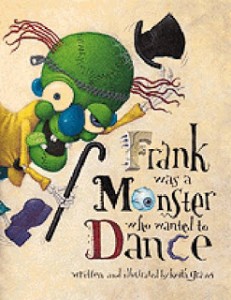Free, safe images for students
 Let’s imagine that you and your students have gone on a field trip to the Henry Ford Museum in Dearborn, Michigan (which, if you can, I highly recommend that you do so because the place is a-ma-zing.) Imagine one of your students wants to write about his favorite part of the trip – seeing the Oscar Meyer Wienermobile. He didn’t take any photos on the trip, so he wants to search for images online to add to his writing. Imagine what might happen if your student uses a typical search engine to look for images of wienermobiles.
Let’s imagine that you and your students have gone on a field trip to the Henry Ford Museum in Dearborn, Michigan (which, if you can, I highly recommend that you do so because the place is a-ma-zing.) Imagine one of your students wants to write about his favorite part of the trip – seeing the Oscar Meyer Wienermobile. He didn’t take any photos on the trip, so he wants to search for images online to add to his writing. Imagine what might happen if your student uses a typical search engine to look for images of wienermobiles.
Now imagine that you are a highly-prepared, tech-savvy teacher (easy to do, because you so are.) When your students want to add images of a wienermobile, or a titmouse, or any image, you guide them to search on Pics4Learning. It’s safe, it’s free, and the images are copy-right friendly.
Before you open up Pics4Learning, imagine the joy every artist will feel if you give your students a quick lesson on copyright first. Ask your students to imagine that they have worked tirelessly to create a fantastic work of art. Imagine posting a photo of said masterpiece online to share your art with family and friends. Now imagine that some random person online decides to right-click the photo of your masterpiece, copy and paste it, and use your work as if they made it. Imagine the outrage! Now your students may understand how artists feel when their images are copied and taken without any recognition or attribution. Just because you *can* right-click and copy an image doesn’t mean you *should*. Use a site like Pics4Learning instead, and there will be no breaking of copyright issues, or any uncomfortable discussions about when searching for images of blue-footed boobies.
Read MoreFrank Was a Monster Who Wanted to Dance
 Here’s a treat for you this Halloween: a rhyming picture book that will delight your little monsters while you hit the CCSS of Fluency and Phonics & Word Recognition.
Here’s a treat for you this Halloween: a rhyming picture book that will delight your little monsters while you hit the CCSS of Fluency and Phonics & Word Recognition.
Frank was a Monster Who Wanted to Dance by Keith Graves is simple, spooky, silly fun. Frank’s dancing delights the audience until his body parts start to come loose, but even a cold shoulder from the crowd (see what I did there?) can’t diminish Franks’s love of performing.
There are plenty of simple rhymes for early elementary students to catch (“ants in his pants”, etc.) and I love that students can listen to them while they enjoy this story on TumbleBooks. Many school, public, and state libraries have subscriptions to this great website where kids can hear books read aloud. TumbleBooks has picture books, chapter books, fiction and nonfiction, all kinds of titles to help students build fluency. An extra bonus: TumbleBooks also has a section of lesson plans for teachers, including a K-2 lesson plan for Frank was a Monster Who Wanted to Dance!
So read aloud this book to your class, or log into TumbleBooks and project it so the entire class can enjoy it. If your little wigglers are anything like mine, they’ll want to move their bodies like Frank did, so on repeated readings, encourage listeners to act out the text. Kids can mime brains flopping out, arms falling out of sleeves, etc. For Halloween, or for anytime your mini-monsters need an active read-aloud, this book does the trick.
For more about the author/illustrator, please visit: keithgravesart.com.
Read MoreKnock, Knock!
 Trent, one of my preschool pals, couldn’t stop giggling as he told me this gem, “So, a horse walks into a bar and the bartender says, ‘Hey, why the long face?'” Kids love good jokes – and they don’t seem to mind the bad jokes, either! Joke books are perfect for early and reluctant readers because:
Trent, one of my preschool pals, couldn’t stop giggling as he told me this gem, “So, a horse walks into a bar and the bartender says, ‘Hey, why the long face?'” Kids love good jokes – and they don’t seem to mind the bad jokes, either! Joke books are perfect for early and reluctant readers because:
1. Jokes are short.
2. You can flip through pages instead of reading sequentially so the thick books aren’t intimidating.
3. Humor makes them intrinsically motivating.
4. With “knock, knock” jokes, kids can already read some of the most important words (and you can use them for a great mini-lesson on those letter-sound combos of kn and wh.)
5. Joke books build Fluency and hit Range of Reading (two CCSS with one stone!)
My latest favorite joke book is Knock, Knock! illustrated by fourteen artists and published by Dial Books for Young Readers. Each artist chose a different “knock, knock” joke to illustrate. The repetition of words like “knock, knock” and “who’s there” plus the clues from the art make this book one most kids can read successfully, especially if you read it aloud first and let students guess what the punchlines to the jokes will be.
Rereading joke books in order to learn the jokes for future telling is probably the most fun way to build reading fluency. Make Knock, Knock! and other joke books available during choice reading time, then give your budding comedians a set time to tell jokes. This can be a one-time laugh-fest, or an ongoing event in your classroom. I liked to claim the end of the day as “Open Mike Time”. If students could gather their belongings and prepare for departure quickly, we’d have time for an “open mike” session where kids could come to the front of the room and tell a joke. This encouraged kids to get ready without dawdling, and for those who liked joking all day long, I could say, “Suzy, we won’t have time for Open Mike if we don’t use this time wisely.” Suddenly, being a class clown (at the appropriate time) is a good thing!
Read More
Words with Wings
This novel-in-verse is for the daydreamers and for the teachers who want to guide, not squash, those who have such vivid imaginations.
Words with Wings by Nikki Grimes is one of those gorgeously-written books you can read aloud to your class for wonderful group discussions and then watch them eagerly grab it to read independently. (Novels-in-verse are not only a great way to immerse your students in poetry, but it hits both Range of Reading and Fluency for Core Standards. Woohoo!) Imagine yourself reading aloud this page to your students and knowing that for some kids, it will hit home:
First Day
I duck down in the seat
of my new class.
To these kids,
I’m not Gabby yet.
I’m just Shy Girl
Who Lives
Inside Her Head.
No one even knocks
on the door
for a visit.
They don’t know
it’s beautiful
in here.
Gabby is a daydreamer, which sometimes causes problems in school and at home. But how can she help daydreaming, when words have wings? Some of the poems would make for great writing prompts in your classroom, like this one:
Waterfall
Say “waterfall”
and the dreary winter rain
outside my classroom window
turns to liquid thunder,
pounding into a clear pool
miles below,
and I can’t wait
to dive in.
To my absolute delight, Nikki Grimes named the teacher in this book Mr. Spicer after one of the coolest teachers I’ve ever meet, Ed Spicer. He teaches first grade here in Michigan and he is committed to giving his students time to daydream. Sometimes he plays music, sometimes it’s quiet. Sometimes he asks his students to write about their daydreams, or turn and talk about them, or daydream on a particular topic, like a science concept they are studying. I love the power of daydreaming and I adore Ed Spicer for encouraging his students to take a few moments to let their minds wander. Follow him on Facebook for more about his classroom because he is a wealth of amazing ideas.
So share Words with Wings with your students. For a quick Craft & Structure lesson, talk about the words Nikki Grimes chose that have “wings” for Gabby. Why did she choose these words? What words have wings for you? Give your students a few minutes just to daydream, wonder and imagine. It may become a favorite break in your classroom.
Happy September, everyone!
For more information about the author, please visit: nikkigrimes.com.
Read More







